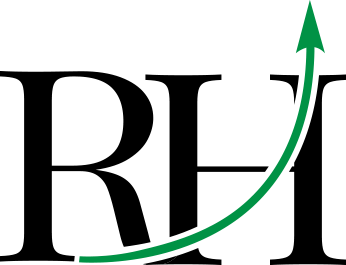Ten years ago, I started out as a research analyst writing about gold. I loved studying individual companies and hunting for long-term winners.
But I quickly realized that one factor drives stock prices above all else: Money flows.
A stock’s chart is just a visual representation of where money is flowing. Over time, I developed an ability to see patterns that lead to rising stock prices, which has helped me and my readers significantly outperform the market.
Trading is how I turn disruption into profits
Disruption is the heartbeat of the market. It’s what drives the biggest financial trends.
As a trader, my job is to spot these powerful moves early… and help readers capitalize in real time.
This is what separates trading from investing.
I don’t worry about a company’s future in a quarter or two. And I don’t try to predict what companies will be the biggest winners five years from now.
Instead, I look to buy into stocks early when they’re in an uptrend. In short: trading is a tool to profit from disruptive trends in real time.
I will recommend a great stock long before its financial “fundamentals” suggest it’s a buy. I’m a big believer that stock prices usually lead fundamentals. And if you’re dialed into the right setups, you can catch that move.
That’s what I do every week for members of my premium RiskHedge Live trading room. And it all comes down to a repeatable process.
My 3-step trading framework
When I’m on the hunt for a new trade, the first thing I look for is strength—industries where money is already rushing in.
Think tech during COVID or biotech when gene-editing stocks like Intellia Therapeutics (NTLA) were breaking out.
Once I’ve found the right industry, I zoom in on the charts.
I’m looking for a very specific pattern: what I call a “launchpad range.” This is a tight, sideways pattern that signals a big move is coming.
Lastly, I watch for a surge in trading volume to see where big money is pouring in.
This three-step process has helped me consistently spot—and act on—opportunities before most investors even know what’s happening.
Thing is, it took years of experience to hone these skills. Having a framework is important, yes—but you also need the discipline to follow it.
That’s why I encourage new traders to follow the 80/20 rule (Pareto Principle). It states that 20% of your trades will drive 80% of your profits.
Your job is to stay in the game long enough to catch those 20% trades. This means:
-
Don’t chase falling stocks.
-
Cut losers quickly.
-
Let your winners ride and compound.
If you do that—and stay consistent—you’ll minimize your losses and be well-positioned to catch the market’s next big move.
Of course, if you don’t want to do this yourself…
The RiskHedge Live trading room is the next best option
I’m in the trading room every day the market is open…
…calling out trades in real time, breaking down charts, and helping members act on the best opportunities I see.
But it’s not just me talking—it’s a true community of traders. Members share ideas, ask questions, and bounce thoughts off each other.
Some folks stick around all day. Others check in once or twice a week, catch up in the “Chat & Ideas” channel, or watch my Monday Market Huddle videos for the week’s playbook.
However you interact with it, the goal in RiskHedge Live is the same: to give you clear, actionable trades—before the crowd catches on.
If you’d like to trade alongside me, you can join us in RiskHedge Live at this link.
I’d love to have you in the community.
Justin Spittler
Chief Trader, RiskHedge




